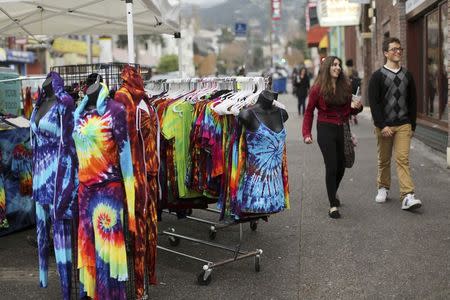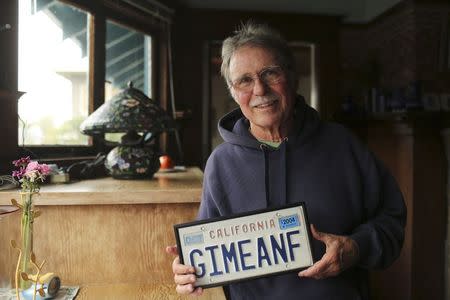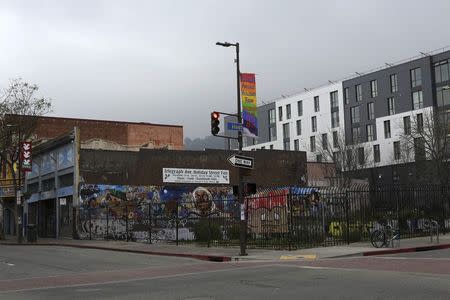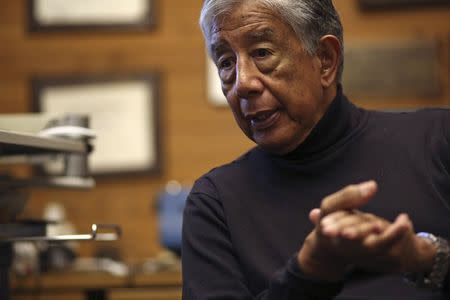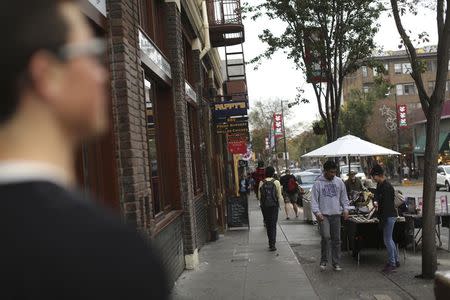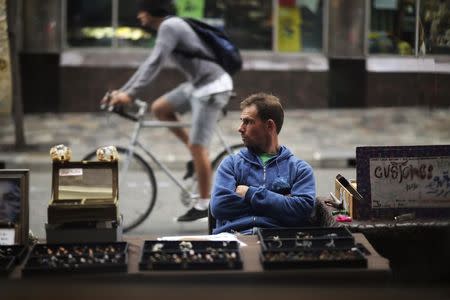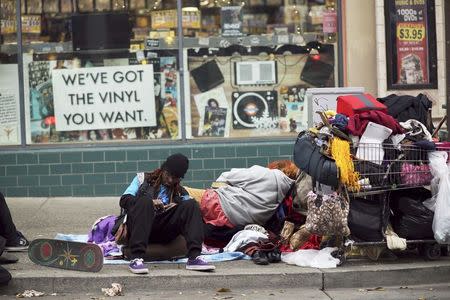Demonstrations aside, it's not 1960s Berkeley any more
By Sharon Bernstein BERKELEY, Calif. (Reuters) - Gray-haired activists still hand out leaflets on Telegraph Avenue in Berkeley, but the California university town that has seen violent protests over police killings of unarmed black men is a far cry from the leftist hotbed that was the face of the anti-Vietnam War movement of the 1960s. Tiny houses in once-rough neighborhoods are selling for $700,000 or more, and designer boutiques flourish. Students at the University of California's flagship campus are among the highest-achieving slice of California's helicopter-parented youth, pushed from a young age to succeed and not particularly inclined to put their futures at risk by protesting. "You can describe me as much as you want, but you can't say my name - I don't want to get in trouble," said a student at a demonstration on Tuesday against the police killings of unarmed black men Eric Garner and Michael Brown. She asked to be identified only by her middle name, Leah. It was clearly not students who led the fourth night of protests in Berkeley sparked by a New York grand jury's decision last week not to indict the police officer involved in the chokehold death of Garner during an arrest attempt. The main speaker was a city council member, and most of the crowd appeared too old to be in school. Many wore bandanas over their faces, shouting for the crowd to march to Oakland to shut down a freeway, which they briefly did. Berkeley burst onto the national consciousness in 1964 when students took over administration buildings in a protest against a campus ban on political activity that became known as the Free Speech Movement. The movement, inspired by students' desire to participate in civil rights activities in the segregated U.S. south, gave voice to many who would become political leaders, including Jackie Goldberg, a former state assembly and Los Angeles City Council member. It also spurred firebrands like Mario Savio, who famously climbed onto a police car to urge students to "put your bodies upon the gears" and actively work to effect change. Berkeley is still a bastion of progressive thinking. In November, the city became the first in the United States to enact a tax on sugary drinks amid a well-financed opposition campaign by the beverage industry. But many who flocked to protests decades ago have now moved into the region's mainstream progressive political class, some living quietly in homes now worth millions. RISE IN AFFLUENCE Country musician Joe McDonald, a veteran whose "I-feel-like-I'm-fixin'-to-die rag" became an anthem for the anti-Vietnam War movement, came to Berkeley in 1965, when most non-student residents were staunch Republicans and a nice apartment could be had for less than $100 a month. Tuition at the university was free; California residents now pay about $13,000 a year, with increases of more than 25 percent expected over the next five years. "Berkeley was middle class, lower middle class and working class," McDonald said. "Now, there's still a middle class, but in my neighborhood, there are homes going for $1, $2, $3 million dollars. You almost have to be well-to-do to live in Berkeley." It was this rise in affluence, along with a drop in the city's African-American population, that moved many protests to nearby Oakland, said former City Council and Assembly member Nancy Skinner, who was a student activist at Berkeley in the 1980s during the movement against apartheid in South Africa. Berkeley residents who are not students are not necessarily moved to protest. Kingsley Oji, 29, was at work as a concierge in one of the high-end hotels that have sprung up here in recent years as demonstrators marched outside on Tuesday night. A young black man himself, he was not planning to take part, saying the demonstrations were disorganized and without a clear agenda. "It would be one thing if they had a plan, if they said we represent thousands of people and here is how we are going to translate this at the ballot box," he said. "But they don't." On campus, senior Alex Flores, 21, said he was too busy studying to participate, and was put off when protesters broke shop windows. "It felt like a message I support was being hijacked by a small number of people using it as an excuse to wreck things," he said. William Drummond, a Berkeley journalism professor who covered 1960s civil unrest for the Los Angeles Times, said it was hard then for students to risk their educational futures to protest - and it's even harder now. But demonstrations that began near campus on Saturday did draw students. For many, that marked a tipping point, Drummond said, as anger over the deaths of Garner and Brown, who was killed by police in Ferguson, Missouri, added to existing angst over the cost of college and the tough U.S. job market. (Reporting by Sharon Bernstein; Additional reporting by Joaquin Palomino; Editing by Cynthia Johnston and Frances Kerry)
